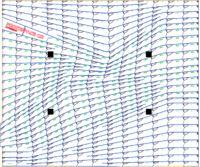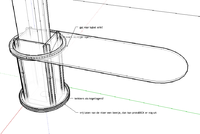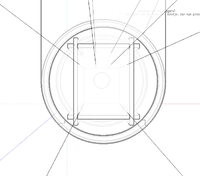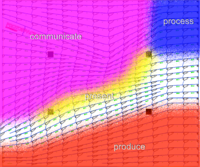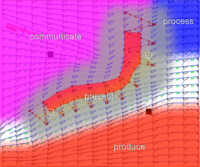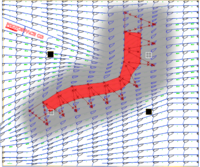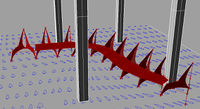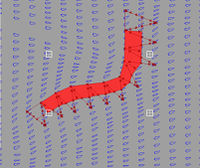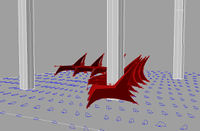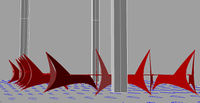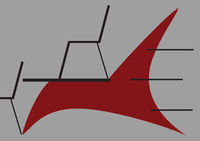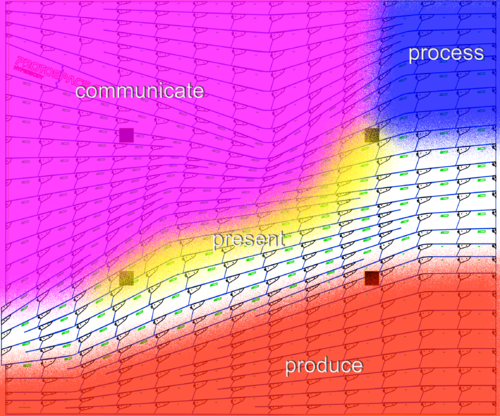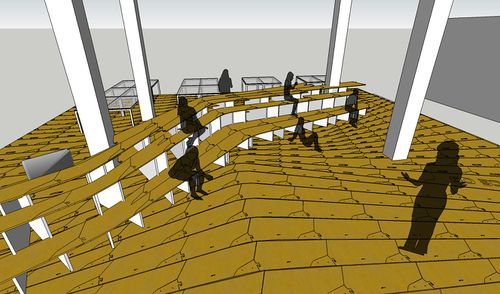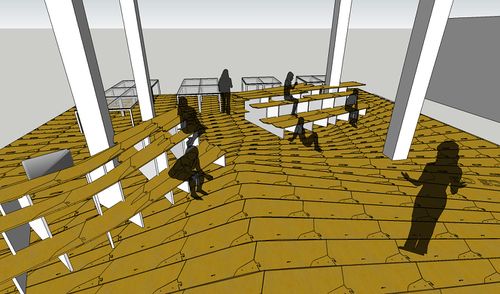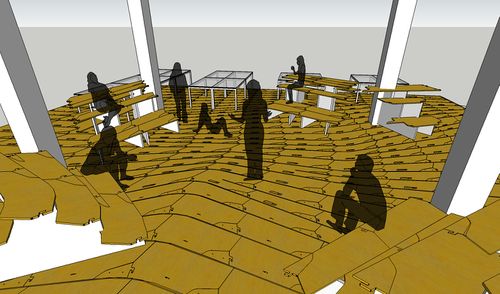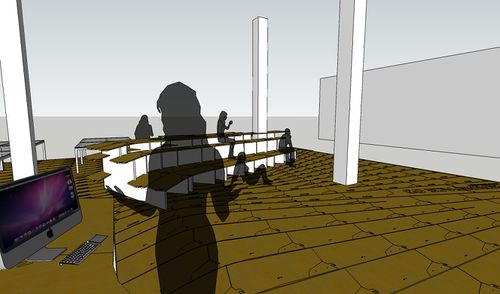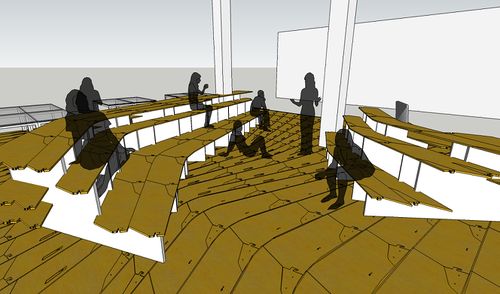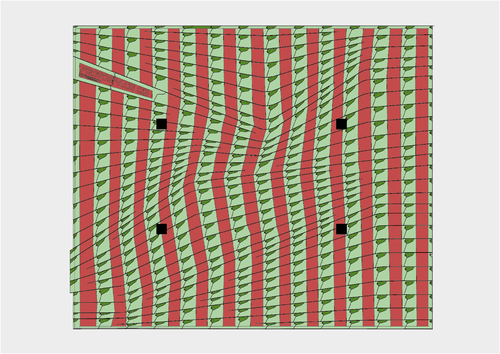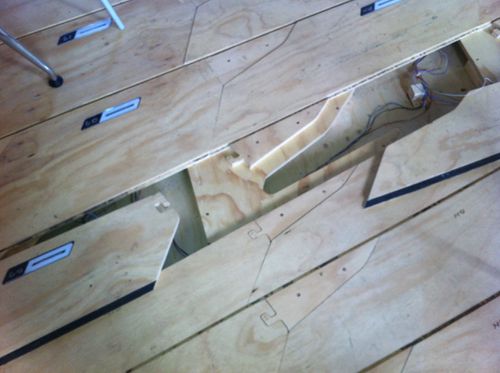project B:Old
Contents |
Team
And us:
Please use our feedback form and help us improve.
Public progress document
Follow us on Twitter: @HyberPublicNL
Our website (under construction) : www.HyperPublic.nl
HyperPublic : Theory: Home / Project B: Home
With the theory behind our project we will start designing a website accessible by all atoms and related teachers. This website will start with some of the tools spoken of in the tools section of our atom wiki.
At a later point, once we mapped new demands from the users and we designed new tools accordingly, we will add more tools.
During the life of the website, we will test our designed tools by questioning the users through a survey or with a voting system on the site itself.
Tools
Actor Database
According to some atoms (Atom 11 Interview) there is a demand to clearly map all the atoms, what they are all about and what their strengths and weaknesses are. This way they can more easily connect to them, and help each other, maybe creating combined projects. We strive to make a searchable database with all the information gathered from the wiki plus the interviews. this way some atom or individual can look up information faster then on the wiki is possible right now.
Software Information
With the high demands on software guidance by students (Atom 06 Interview) and teachers (Teachers Interview), especially for the next (processing) phase, we are going to set up a large database with all the information about all the different programs and relations between them, including scripts and tutorials.
Pachube
project B: Interviews We will also implement the functionality of Pachube into our site. with this device students will be able to make use of all kinds of data streams and relate it to their designs. Also they can measure their own data with the help of a Nanode or a Arduino (available at Hyperbody) and stream it onto the web.
Conclusions research
Last weeks we have done a more thoroughly research about our topic. We interviewed multiple professors about their ideas on our topic of research. Also we got more information from the atoms through a discussion and a workshop. The results of these interviews and workshops, together with the old interviews are listed here
Some conclusions can be drawn from this research, which we need to take into account in order to make a proper design:
- We should find a common topic where the atoms relate to, use this as the topic for our design. Find related tools within this design.
- The tools we use in the design should be recognizable and easy to use by any user, no extra effort should have to be put into using the tool by the user, otherwise it will simple not be used.
- Use existing, standardized, software to build up your design. These are proven concepts and users can already identify with them. By merging multiple systems we can do something new.
- In order to make collaboration work, there needs to be a physical element in the design, something multiple users can relate to and interact with.
- We have to create content ourselves, translate the needs of the user (atoms) to a certain tool. We should find the tools ourselves and master them in order to make a proper translation for the atoms. We should be an added value for the users.
Design
By creating a design for protoSPACE, we will try to enhance the learning and working environment of the students.
protoDESK
By trying out different assembling techniques in the small protoDESK, we will learn valuable lessons about CNC milling.
protoTRIBUNE
We will build an object which will divide the space into four zones:
- Communication zone
- Presenting zone
- Producing zone
- Processing zone
With these zones we answer to the demands of the students here in ProtoSpace (see interviews). The object will have multiple functions:
- A tribune on the communication zone, where students will have no obstructions viewing the beamers (at least two of the four).
- Option to re-arange the tribune to create a communicating circle, where students can communicate without hierarchy (everyone is equal in the circle)
- A model rack where all small and big models can be stored. Also here students will be able to view past projects and get all the information attached to it, to use in their own projects.
- the front of the structure will give information about current events.
- A place where students can work without disturbing the presentation zone, multiple groups can use the space at the same time (with some rules concerning sounds). Also these tables will not be moved in normal conditions, making this working space more interesting for students.
protoTAG
By using the protoTAG system, students models and other work will have a connection to their respective online presented models.
Research
Last weeks we have done a thorough research about our topic. We interviewed multiple professors about their ideas on our topic of research. We also got more information from the atoms through a discussion and a workshop. The results of these interviews and workshops, together with the old interviews are listed here
Some conclusions can be drawn from this research, which we need to take into account in order to make a proper design:
- We should find a common topic where the atoms relate to, use this as the topic for our design. Find related tools within this design.
- The tools we use in the design should be recognizable and easy to use by any user, no extra effort should have to be put into using the tool by the user, otherwise it will simple not be used.
- Use existing, standardized, software to build up your design. These are proven concepts and users can already identify with them. By merging multiple systems we can do something new.
- In order to make collaboration work, there needs to be a physical element in the design, something multiple users can relate to and interact with.
- We have to create content ourselves, translate the needs of the user (atoms) to a certain tool. We should find the tools ourselves and master them in order to make a proper translation for the atoms. We should be an added value for the users.
While trying to design a better working environment for the students and teachers, we encountered a lot of needs and challenges for our proposed adjustments to protoSPACE which we will try to put into practice.
Expenses
- changing the direction or location of the projectors and/or screens is too expensive*
- original iWeb projector screens are not sufficient for a daylight lit room, because they are translucent
- changing the ceiling is only possible underneath the wooden beams in direct line with the current lighting fixtures and can't way more than what's currently hanging from the ceiling
- creating a better lighting system with controlled LED's is too expensive*, since the current setup costed about €6000,- without installation costs and doesn't get close to our intended idea of a 'square meter lighting grid' idea with directed LED lighting.
- it's possible to use existing materials of past projects stored in the cellar Hyperbody room
*'Too expensive' means that we feel that we cannot realize the project before the end of the semester because there is only a small budget at Hyperbody which we can use.
Students needs
- students like to have access to protoSPACE all day without permission
- students like to have fixed spot within protoSPACE where they can design
- students like to have fixed space at the design studio for all their models
- students like to know about fabrication models early in the design process so they can fabricate their own models without supervision
Teachers needs
- teachers like to be able to move furniture into different configurations to accomodate for discussions, interaction, presentation and separation between different activities going on at the same time
- teachers like to have the ability to change the natural daylight penetration into protoSPACE in an analog way, so not just zero or full daylight penetration
- teachers like to be talking with students instead of only talking to them
- teachers would like to create an easy way for students to start using the protoTAG system for physical objects
We used all these inputs and more to create a general zoning scheme for protoSPACE on which we will base our general design as can be seen below:
Design
The design is capable of being moved and changed into different configurations according to the use of the space on the particular time.
The research clearly showed that students and teachers have different demands for the our design and we tried to incorporate all of them in our design.
One of the constraints of protoSPACE is the wooden CNC milled protoDECK flooring system which is still in development. Almost all of the surface is made up out of interchangeable wooden tiles. Half of these tiles have pressure sensors and lights built into them which will emit different types of light patterns in the near future.
All tiles need to be able to be taken out, so ideally our design will only rest with its legs on the fixed position 'connector tiles' (dark green triangles in drawin below) which lay in between the big changeable tiles. To do this, we have designed a system which has movable legs which most of the time can rest on these load baring 'connector tiles'. There are possibilities to place parts of the design in different configurations which might not always be able to fix only on the 'connector tiles'. At those times, it is possible to place them in line with these tiles, as is shown with the light green color below.
Still to add:
...information on movability of four legs per 'unit' which can all move in four directions and why this is important in this design considering the protoDECK
...explain why we used especially this part of the protoDECK: curved to both sides, connection to protoSPACE if it is built up in design location (etc)
HyperPublic : Project B: Home
